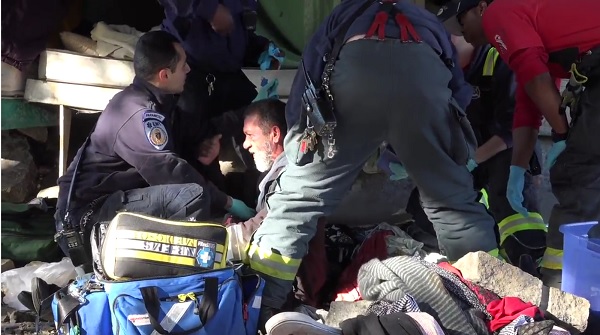latest
Report: Fall River area sees biggest increase of opioid-related hospitalizations in Massachusetts

By Katie Lannan
Massachusetts in 2017 continued to have the highest rate of opioid-related emergency room trips among all states that report those numbers, according to data presented Wednesday.
In 2017, the most recent year for which data was available across all the states, Massachusetts also ranked second-highest for opioid-related inpatient stays, behind the District of Columbia.
Health Policy Commission staff member Laura Nasuti, who presented the data at a virtual meeting of the HPC’s Market Oversight and Transparency Committee, said Massachusetts had “inched up slightly” from 2016, when it had the third-highest rate for opioid inpatient stays.
Nasuti told the committee that while Department of Public Health data shows a 6 percent decline in opioid overdose deaths from 2016 to 2019, the state continues to experience high rates of injury and death related to opioid use. Opioid-related stays make up a significant amount of inpatient hospital volume here, she said.
From 2016 to 2018, opioid-related emergency department visits declined by 6 percent, according to the HPC data. Opioid-related inpatient stays increased by 5 percent in the same time period.
That inpatient increase was driven by an uptick in hospitalizations with a secondary opioid diagnosis, meaning it was not the primary reason for the patient’s stay, Nasuti said. Among those secondary diagnosis cases, 18 percent of all primary diagnoses were related to behavioral health.
Overall opioid-related hospitalizations, including inpatient and emergency department visits, decreased 2.1 percent from 2016 to 2018, according to the presentation.
That change was not uniform across the state. The Cape and Islands region had the largest drop in opioid hospitalizations in that three-year period, at 20 percent. The biggest increase, of 18 percent, was in the Fall River area.
The 2018 hospitalization data also indicates some disparities among income levels and racial and ethnic groups.
Residents living in lower-income areas accounted for 41 percent of all opioid-related hospital visits, while those in the highest community income quartile represented 11 percent, Nasuti said.
While the opioid hospitalization rate for white men decreased 6.8 percent, it grew 6 percent for Hispanic men and 8 percent for Black men, according to the presentation. Nasuti said it’s unclear if the increasing disparity is due to new opioid use, lack of access to community-based treatment or other factors.
It’s also not clear what the effects of COVID-19 will ultimately turn out to be.
“The impacts of the COVID-19 pandemic on the opioid epidemic are unknown, although there is some emerging research that it may increase opioid-related injuries and deaths, especially among populations that are heavily impacted by COVID-19,” Nasuti said. “These impacts may include social isolation, economic insecurity, and just the trauma of the pandemic.”
She said the pandemic has also presented some opportunities for increased treatment for opioid use, including through expanded access to telemedicine, the easing of restrictions on dispensing methadone, and the authorization for additional providers to administer or prescribe opioid-use disorder medications.
-

 Community6 years ago
Community6 years agoNational Shrine of La Salette Festival of Lights 2017 set to begin
-

 Community6 years ago
Community6 years agoMassachusetts State Police looking for good home for retired dogs
-

 Crime6 years ago
Crime6 years agoFall River ranked most dangerous city in Massachusetts according to report
-

 latest6 years ago
latest6 years agoDurfee student allegedly overdoses on marijuana
-

 Community6 years ago
Community6 years agoVideo of Fall River Police goes viral
-

 Causes6 years ago
Causes6 years agoMissing Fall River woman found deceased
-

 Crime6 years ago
Crime6 years agoFall River Police add names to most wanted list
-

 Causes6 years ago
Causes6 years agoFall River teenager reported missing has been found





